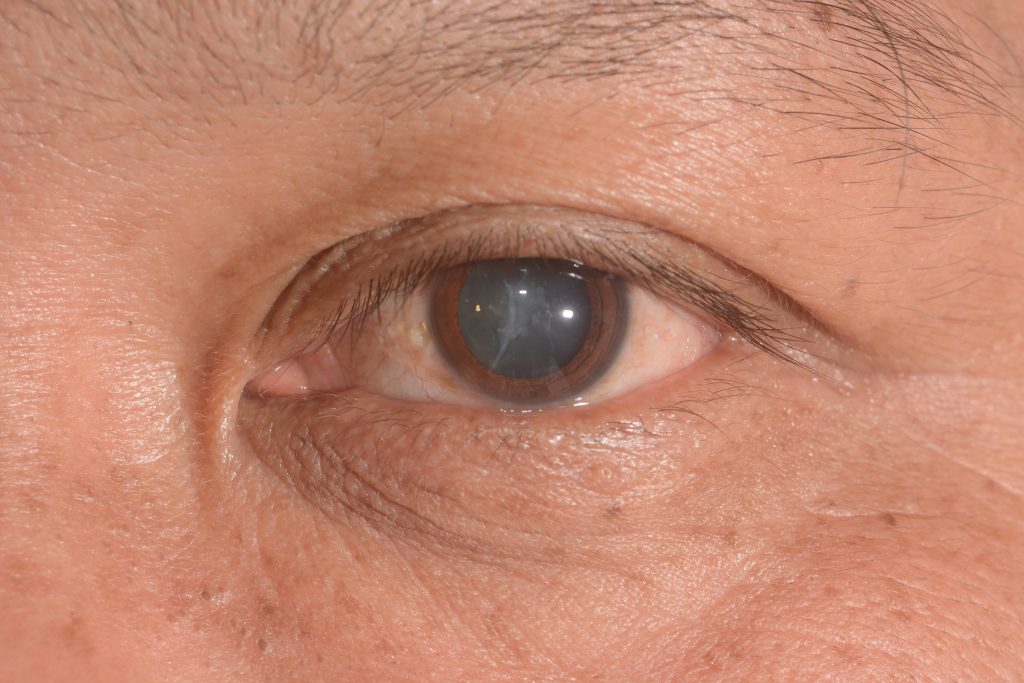
A sight for sore eyes
February 12th, 2021Imagine life without your eyesight, how debilitating and scary would that be? It would be life-changing and challenging, so it’s really important to stay focused on good eye health. Studies have revealed that in the USA 8.9 million and the UK over 4 million people are predicted to be blind by 2050 with diabetes being one of the leading causes. It’s easy to see that prevention and detection will reduce the risk of blindness or other serious eye conditions and in this article, we are going to open your eyes to:
- Types of eye conditions
- Being ‘screen smart’
- Practising best habits for healthy eyes
Eye problems can be the result of aging, health conditions, lifestyle or they can be hereditary. It’s clear to see that visiting an eye expert such as an optician should be a priority, especially as you age. However, a lot of people treat it as a low priority, when was the last time you had your eyes tested?
Let’s take a look at the most common types of eye conditions.
- Dry Eye Disease (DED)
DED happens when your eyes don’t make enough tears or when tears evaporate too quickly which makes your eyes feel gritty, scratchy or watery and they may appear red. Dry eye becomes increasingly common with age and for people who stare at their digital devices such as a computer screen all day
- Macular Degeneration
Macular degeneration, which is also known as ARMD (Age-Related Macular Degeneration) is a condition that affects the vision in the central visual field. It may result in blurred vision or, worse, no vision at all in this area.
ARMD is caused as the retina deteriorates. The light sensing cells in the back of the eyes start to deteriorate away, leading to vision problems. It may only affect one, or both.
- Glaucoma
Glaucoma is caused by damage to the optic nerve. It is common and can lead to vision loss as fluid builds up in the front part of the eye. It can be treated but the later the treatment, the higher the chance of permanent vision loss.

- Cataract
Cataracts form slowly, and can affect either both eyes, or just one. They are caused by the lens opacifying over time, which decreases vision in the eye or eyes affected.
Symptoms of a cataract may include:
- Blurry vision
- Double vision
- A sense of fading when looking at colors
- Trouble seeing in bright light
- Halos around light sources
- Trouble with night vision
Cataracts affect everyday life activity such as driving, reading or facial recognition.
- Diabetic retinopathy
Diabetic retinopathy (aka “Diabetic Eye Disease”) occurs in those who suffer with Diabetes Mellitus. It is a medical condition that damages the retina and is very common, affecting up to 80% of those who have had Diabetes over a span of 20 years or more. As such, it is the leading cause of blindness in many countries.
- Amblyopia
Amblyopia (“lazy eye”) is a sight disorder in which the brain favors one eye over the other due to a failure of processing the input from one eye (the “lazy” one). The eye appears normal on the outside but has decreased vision. It is the most common cause of single eye decreased vision problems amongst both adults and children.
- Strabismus
Strabismus is the name for the condition in which the eyes do not properly align with each other – only one eye can focus at a time, and this can alternate between the eyes. It may be intermittent, or constant. It can affect both adults and children; if it is present in childhood, it may result in a loss of depth perception or Amblyopia.
- Blurred vision
Many people who have Multiple Sclerosis (MS) suffer with blurred vision – it is one of the earliest symptoms, although not only limited to this health condition. Blurred vision is caused by inflammation along the optic nerve, which connects the eyes to the brain. As a result, Optic Neuritis develops, which gives not only blurry vision but also a loss in color vision and pain when moving the eyes.

- Omega 3 deficiency
Abnormalities in eye oil production can lead to stagnation of oils and create an infestation of parasites. When there are no oils it causes reflex tearing, the eyes start to stream, glands get blocked and inflamed. A nutritional diet including oily fish is recommended
A product worth mentioning is: ‘Can-C’ eyedrops. Find out more.
Are you being screen smart?
If you value your eyesight, you must be screen smart. Most people spend far too much time looking at their mobile phones or computer screens. Digital screens give off blue light which is a high energy light that can be bad for your eyes if overexposed. In this digital world that we live in, we use our eyes more than our ears – we send emails, text messages and stay in touch online. We watch tv, play computer games and do online shopping.

There are things you can do to be screen smart starting with the 20-20-20 rule and it’s easy to live by. Every 20 minutes look 20 feet in front of you for 20 seconds to give your eyes a rest from your digital devices such as a mobile phone or your computer screen. You can also reduce the risk of damage to your eyes by the way that you position yourself in front of a computer.
You should place your screen at an arm’s length away and at eye level when sitting at your desk or workstation. Avoid screen reflection from overhead or other room lighting and sunlight. Adjust your screen brightness and font size so your eyes aren’t straining and wearing blue light glasses helps to filter out the blue light preventing more eye strain and reducing the risk of dry eyes and headaches.
We recommend using Can-C comfort drops to relieve the stress on your eyes when using a digital screen for periods of time. Find out more.
Practising best habits for healthy eyes
- Be eye aware – educate yourself about your eyes and today is a good start! Having an annual eye test is really important especially as you age. If you drive you have to be able to read a number plate of the car in front of you at 20 metres or you won’t pass your driving test
- Blinking is very important – it flushes fresh tears and nutrients across the eyes and clears debris on the ocular surface. It helps to clean and moisturize the eye and helps to prevent dry eyes
- Watch your weight – being overweight can elevate intraocular pressure that is associated with glaucoma. Diabetes is associated with weight gain and diabetes is one of the leading causes of blindness
- Lubricate the eyes – using eye drops can stabilize lacrimal fluid and regenerate reddened, burning dry eyes. Some over the counter eye drops can enhance your eyes making them appear more sparkly and fresh
- Rest your eyes – closing your eyes relaxes the eye inducing calm and thinking time. You should listen to your body and if your eyelids are twitching or feel heavy you should take time out or have a little sleep
- Be active – physical movement increases the flow of blood to the optic nerve and retina in the eye. When doing sports like skiing or sailing eye protection is important, snow, water and wind can affect your vision
- Sleep – whilst you sleep you don’t need to focus, giving your eyes time to replenish natural tears. It reduces the risk of burst blood vessels (bloodshot eyes)
- Quit smoking – smoking increases the risk of eye conditions such as age-related macular degeneration and other conditions mentioned above. There are so many reasons to quit smoking so, if you’re a smoker stop today
- Wear sunglasses – these can prevent damage from UV light which can cause conditions such as cataracts. The same can be said for a windy day when debris could blow into the eyes so wearing sunglasses is a great defence mechanism
- Go outdoors – enjoying the outdoors gives your eyes time away from focusing on things close up like screens or books. Doing activities that increase blood flow around the body is very beneficial
- Wear safety glasses – when performing certain activities at work or doing DIY it is sensible to wear eye protection to prevent foreign objects entering the eye and causing damage
- Eat right for good sight – Omega-3 fatty acids found in fish and other nutrients found in eggs, nuts, carrots and lentils are renowned to be good for eye health. We recommend reading ‘The eyesight saviours book’ By Marios Kyriazis about how nutrition can improve and protect your eyesight.
Find out more : http://bit.ly/EyesightSavioursBook - Reading glasses should be updated – by the age of 40 most people develop a condition called presbyopia this is when long-distance vision is fine but close up is blurred. Whether you are near or farsighted eye tests are important because your eyes are changing as you age. If you experience a sudden change in your vision it’s essential to see your doctor
- Make adjustments when using digital devices – adjust the brightness of your screen and make the font bigger so you don’t strain your eyes
- Time management and work demands – a busy job role or schedule can dictate the amount of time you spend in front of a screen but if possible manage your time exposed to blue light so it doesn’t become an issue
Don’t let your job be a sight for sore eyes, think screen smart and create an eyesight health regime including good nutrition and regular eye tests.
It’s worth noting, to build awareness about eye health, to inspire and to educate people every year in September there is ‘National eye health week’.
Find out more: http://www.visionmatters.org.uk/








